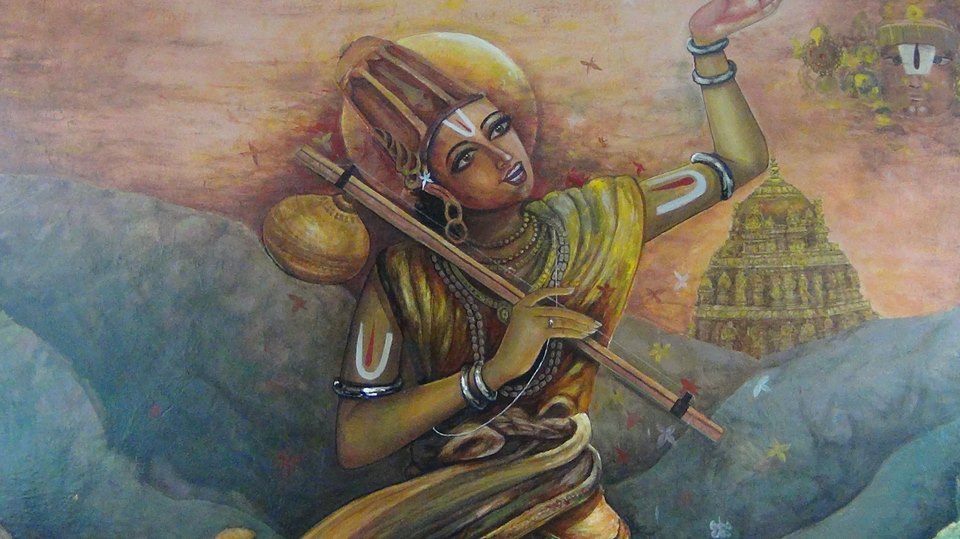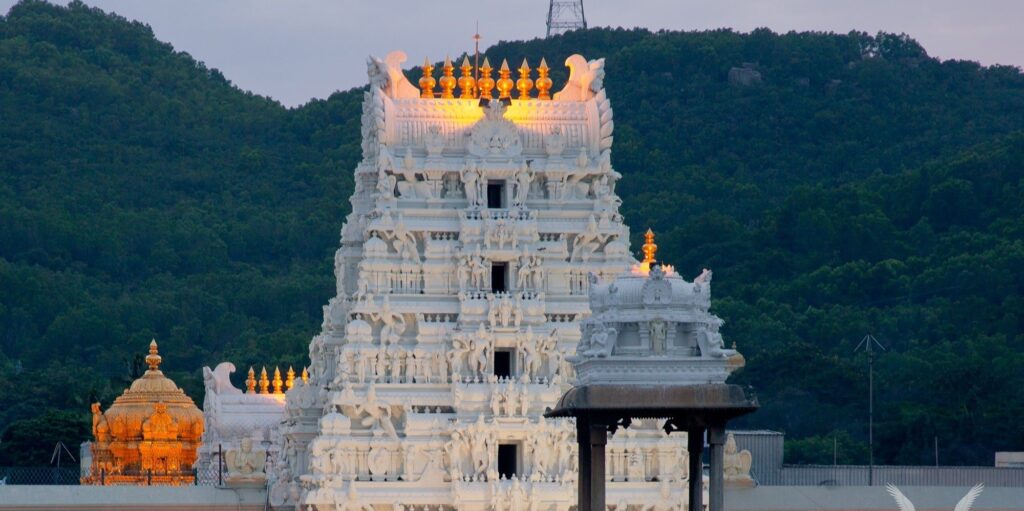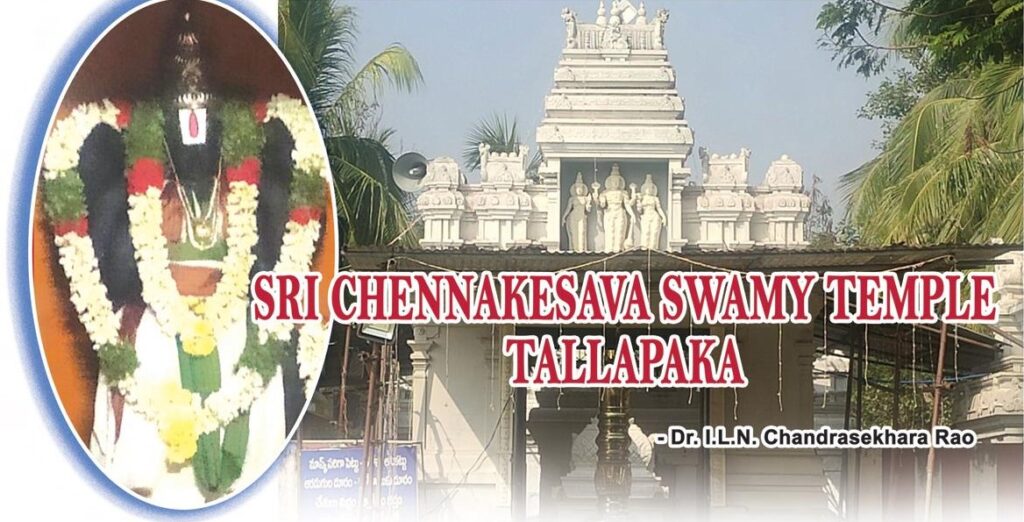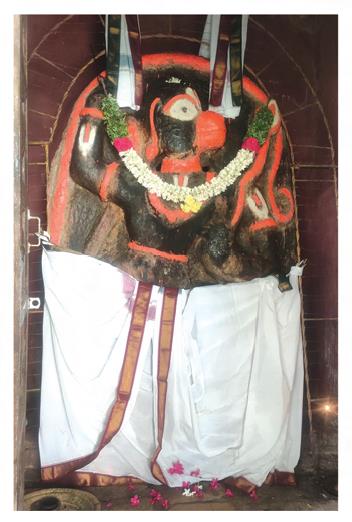Ramulavari Meda / Rama’s Abode
As soon as you cross Snapana Mandapam there is a narrow 12″ x 10″ passage. This is known as Ramulavari Meda. Before 1262-65 A.D. the researchers believe that this was not there. They believe that this was a part of the present Vaikunta Pradakshina path.
To enter Ramulavari Meda from Snapana Mandapam we have to pass through Six feet wide stone door frame. Outside this door frame wooden door frame with doors is built for protection. A locking system is provided to lock inner doors.
Sri Rama Rama Ramethi
Rame Raame Manorame
Sahasra Nama Thath Thulyam
Rama Nama Varanane
On both sides of Ramulavari Meda, there are raised terraces or platforms.
- On the southern side raised platform the utsava statues of Angada, Hanuman, and Sugreeva, facing north are installed.
- Similarly, on the northern side raised platform utsava moorthies of Venkateswara’s family members like Vishwaksena, Anantha, and Garuda are installed. These statues face south.
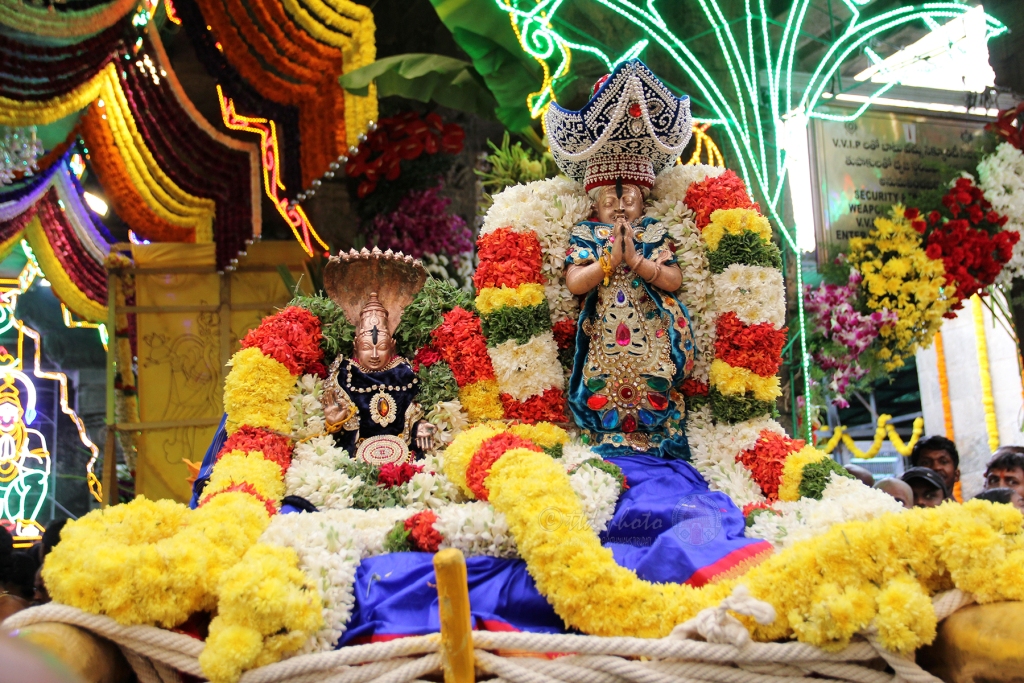
Rama’s family
The Deities who belong to Rama’s family –
Sugreeva
Being the king of Vanaras, he has a crown on his head. He is offering his salutations to Rama by joining his two hands with upward palms. He will participate in the coronation ceremony of Rama which will be performed on Dasami Day after Sri Rama Navami.
Angada
After seeing Rama’s splendor in Lord Venkateswara of Venkatachala, Angada’s jaw gets dropped. Angada’s bewildered expression can be seen in the face. Being crown prince he has a small cap-like crown. He too will participate in the coronation ceremony of Sri Rama.
Obedient Hanuman
Obedient Hanuman is standing before Rama with his right hand covering his mouth. When he says ‘Yes My Lord’ to avoid spluttering he is covering his mouth with his right hand. Because of this particular behavior, he is known as the most obedient Hanuman. He plays an important role when Rama’s court gets assembled or at the time of Rama’s coronation.
Sri Venkateswara’s family
The Deities belonging to Sri Venkateswara’s family –
Anantha
Anantha is no other than Adisesha who becomes a comfortable bed for Lord Srinivasa by curling down. He has hoods and is showing blessing Mudra. This Moorthy is made of Panchaloha (an alloy of five metals).
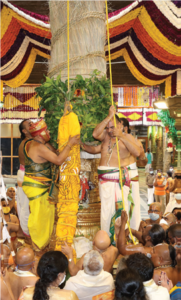
On the very first day of Brahmothsavams before hoisting the temple flag a ceremony to invite eight guards who guard four directions as well as four corners, is performed. Anantha participates in this Gramotsav.
Vishwaksena
Vishwaksena is the commander-in-chief of universal Lord Sri Venkateswara’s army. He is also known as “Sena Mudaliyar” in Tamil. He has blessing hands and has Sankhu and Chakra. This Moorthy is also made of an alloy of five metals. He plays an important role in different courts – Ugadi, Deepavali, Anivara – He will head ceremonies like Ankurarpanam, Mrutti Sangraha (soil collection).
Being commander-in-chief of Lord Venkateswara he occupies an important place.
Garuda
He is Swamy’s aerial car. He will be ever ready to carry the Lord with open wings. This panchaloha Moorthy stands with folded hands. He participates on the first day of Swamy Brahmothsavam at the time of inviting rulers of all the eight directions. This Utsav Moorthy whose height is 1 ½ feet participates in all ceremonies.
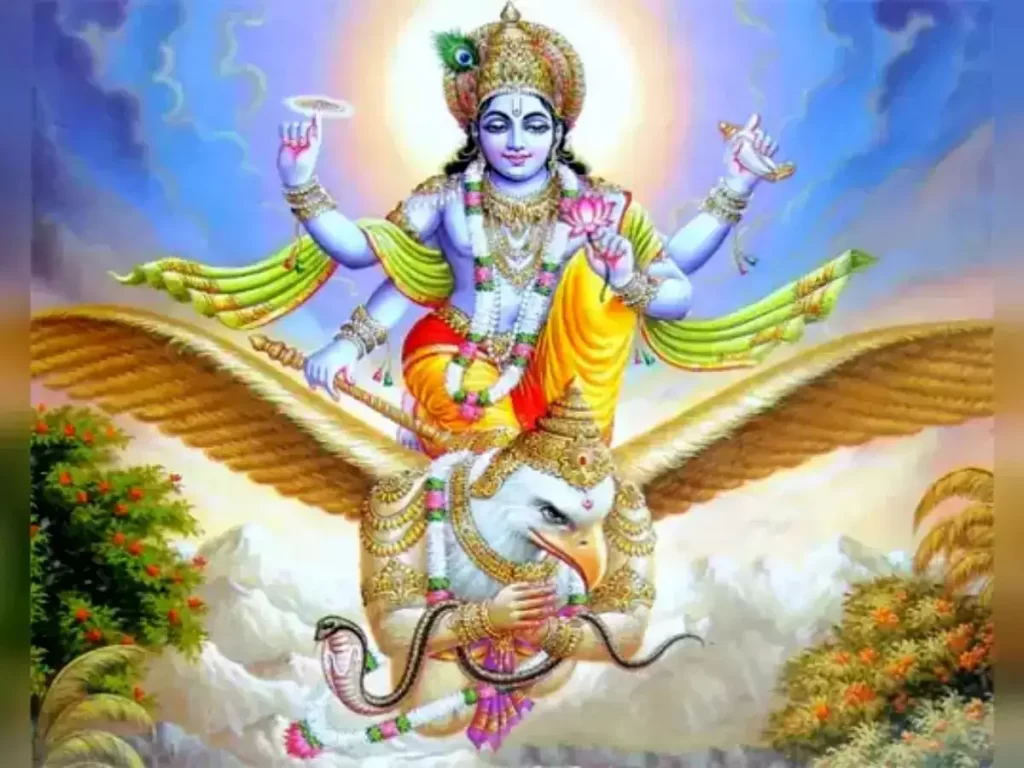
The idols of Seetha Rama and Lakshmana which are now kept in Sanctum Sanctorum were once on the raised platform. Because of this placement, that particular area gets the name of ‘Ramulavari Meda’.
It is said the idols which were once on the platform were shifted into Sanctum Sanctorum. But the name continues to be Ramulavari Meda even to this day. The other small idols that were there on the raised platform were, it is said, shifted to Ankurarpana (sprouting) Mandapam which is near the golden well.
When the crowd is larger, devotees will have the darshan of Lord Balaji from this Ramulavari Meda. Daily night Ekantha seva (solitude) will be performed here. At that time a descendant of Tallapaka Annamacharya with a Tambura (a stringed musical instrument) will sing a lullaby.
